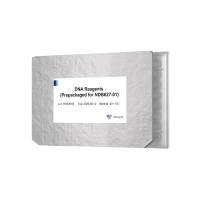Production of a Human Antibody Library in the Phage-Display Vector pSEX81
互联网
1583
Human monoclonal antibodies (MAbs) are more suitable than MAbs of animal origin for clinical applications because of lower hypersensitivity reactions, less formation of circulating immune complexes and lower anti-immunoglobulin responses The classical production of human MAbs via the hybridoma technique or Epstein-Barr virus (EBV) transformation is limited by the instability of cell lines, low antibody production, and the problems of imununizing humans with certain antigens (1 ,2 ). A promising alternative 1s the production of human recombinant antibodies (3 ). Recombinant DNA technology has made it possible to clone human antibody genes in vectors and to generate antibody expression libraries (4–7). One approach has been to amplify and recombine the IgG repertoire of an “immunized” donor. This has been used to isolate several antibodies related to diseases (8 ,9 ). In order to obtain more universal antibody libraries the naive IgM repertoire of several “unimmunized” donors were pooled (10 ,12 ). The complexity of the combinatorial libraries has been further increased by creating the so-called “semisynthetic” antibody libraries (22 –14 ).








